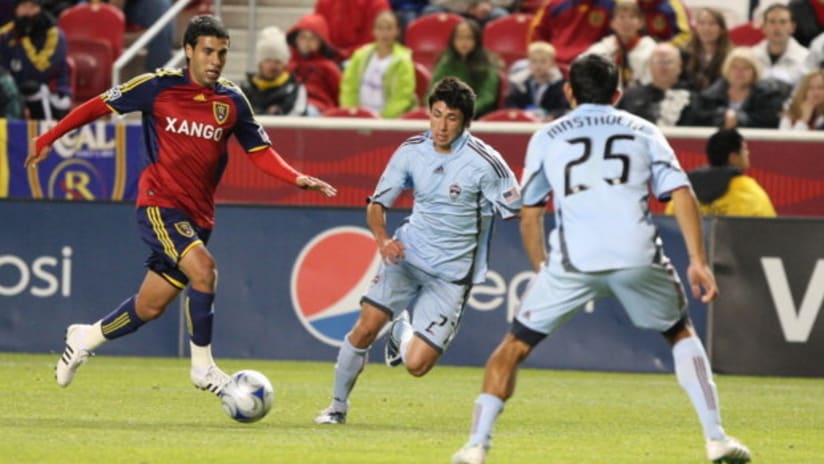An interesting trend has developed for Real Salt Lake early in this season. Quite simply, they are shooting less but scoring more. Although the data is limited, it’s interesting to look behind the numbers and see the reasoning for the results.
First the numbers, straight up
Shots: In 2009, Real Salt Lake led the league in shots for the season. They averaged 16 shots per game over the first four matches of the season. Compare that to just 10 shots per game over the same period this season. That’s a whopping 36 percent decline! Of course, no statistician worth their salt would accept the sample size we are working with, so it’s a good thing we aren’t statisticians.
SOG: The story with shots on goal is similar to shots. This is another statistical category that RSL led the league in during 2009. Over the first four contests a year ago, they were averaging seven shots on goal a year ago, compared to just four this season.
Goals: Now for the stat that really counts—putting ye olde ball into the back of the net. Real Salt Lake were a little less prolific in this category in 2009, tying for second for the season. They scored six goals, or 1.5 per game, over the opening four-game stretch. This season they have managed seven scores, which means a slightly higher 1.8 goals per game average.
Then, the percentages
In 2009, Salt Lake put 40 percent of their shots on frame in their opening quartet of matches, compared to 43 percent this season. This is a very negligible increase in productivity year-over-year.
However, the important number here is scoring efficiency. That’s a striker’s (or any other player's) ability to put shots into the back of the net. It’s typically expressed as a percentage of shots that are converted into goals. As a team, the Claret-and-Cobalt converted roughly 9 percent of their shots in the opening weeks of 2009. However, this number has jumped dramatically in 2010, doubling to 18 percent for this season to this point. That’s another dramatic increase.
Finally, some hypotheses
As you can tell from the stats above, two significant changes have occurred when looking at the numbers this year versus those a season ago.
First, the shots-per-game numbers have dropped substantially, but why? If you look at the opening stanza a season ago, the majority of the shots were taken by Yura Movsisyan, who is no longer with the club. Movsisyan took 17 of the team's 65 shots, or 26 percent. He was often on an island. Robbie Findley had a hat trick and has always been a threat, but his real emergence occurred later in the season. Fabian Espindola had not yet returned to the team after his brief departure to Venezuela.
Conversely this season, the shots are more evenly distributed and appear to be coming more naturally in the offense, which leads us to our next key difference this season: goals.
The goal-scoring efficiency has improved dramatically because the attack is much more balanced. The team has developed a style of play with a strong buildup through the midfield and a lot of combination play. This makes the team more difficult to defend, and it allows the team to get off higher quality shots, which leads to the improved efficiency.
While this is an early trend and may not hold up throughout the season, the implications bode well for this team if they do.


